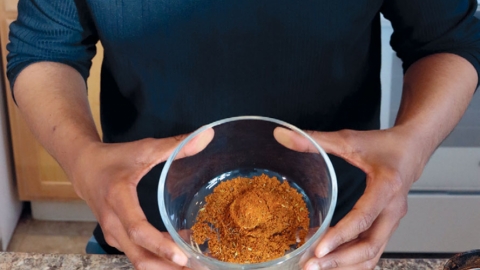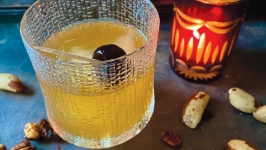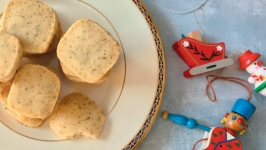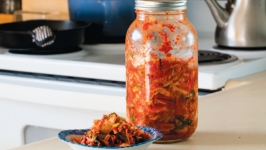This is the Bread of Affliction
"This is the bread of affliction which our ancestors ate in the land of Egypt.
Let all who are hungry come and eat; let all who are needy come and celebrate Passover.
Now we are here; next year may we be in the Land of Israel.
Now we are slaves; next year may we be free."
—Passover Haggadah
Many Jewish holidays have foods associated with them: apple cake for Rosh Hashanah, latkes for Hanukkah, and hamantaschen for Purim—but not until recently did I think about Passover as a holiday entirely focused on a meal. The holiday and its food are intrinsically linked.
Seder, the Hebrew word used to designate the meal prepared and experienced during the first two nights of Passover, literally translates to mean “order.” Throughout the seder, participants follow the Haggadah, which serves as an instruction guide moving guests from oppression to liberation through food and story.
The Seder begins with three pieces of matzah that continue to be transformed throughout the duration of the evening. We first break the middle piece of matzah in half to make the afikoman. We place the smaller half back into the stack and the larger half becomes a source of entertainment as it is hidden in the home for the younger Seder-goers to search for it. We then use the matzah to sandwich charoset (a sweet mixture of apples, nuts, wine, and cinnamon) with marror (a bitter herb, usually horseradish) — combining the symbols of freedom and slavery in one bite. In its final iteration, the found afikomen matzah is then broken into bits, distributed amongst diners, and eaten as the final bite of the meal.
In “The Meaning of the Afikomen,” Helen Plotkin writes: "The Haggadah guides us through the process of eating a story. We taste the bread of affliction. We put the salty tears of the enslaved Israelites on our tongues. We eat vegetables that evoke the bitterness of forced labor, and we interpret our condiments as mortar on bricks. We lay out the entire story on a plate, creating a mandala of symbolic foods."
More than ever, the Passover Seder reminds us that food always is part of a much larger complex story embedded with history and memory. The Haggadah instructs us to examine deeply what we are eating, to discuss how the themes of Passover are applicable to current injustices in the world, and to leave the table ready to act so that next year, we may all be free.











